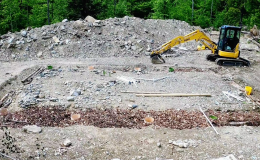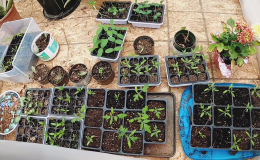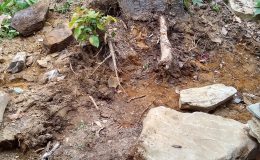1. Observe and Interact
- By : Sarah
- Category : Food Forest, Gardening, Land, Materials, Planning and Goals
- Tags: hugelkultur, permaculture

The first of 12 permaculture principles is observe and interact. This is about sitting back and looking at what you have before you interact. Take a walk, sit on a rock, get a portable hammock so you can set it up in various places so you observe your land in the most comfy way possible. I deally, do this for a year before you start. I know that seems like a long time, but how can you find the areas that flood in the spring or where you get te most sun in the summer if you don’t spend a whole year?
They way we got in a solid year of observation was rather accidental. We set up camp (a small tent) and lived in it on the land. We lasted 2 months in the little tent and then proceeded to have the rainiest spring in history and gave up. We had time to come out and walk the property throughout the year and get a better vision.
Then we took the plunge and hired a logger to do a minimal clearing for our house site and a few other things. The paths he made to haul lumber allowed us easier access to the whole lot while we were living in town still. Shortly after we moved into a large wall tent and built a small cabin. Now, our third winter in the cabin, we have learned so much about our land that we have been able to pick the best place we could for a more permanent house and everything else we may want.
Some of the places we had wanted to do thing originally would have been horrible disasters had we not had the time to watch our land for all that time. We also found huge amounts of resources as we watch the land grow and change through the seasons. Once we are ready to build, we will have gathered a large chunk of house building materials right off our lot, for free.
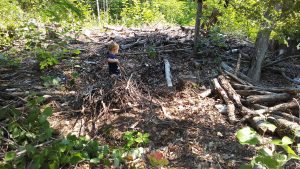
This pile of brush left behind was a large supply of firewood, kindling, rocks for garden walls, and rotten logs and stick for hugelkultur beds.
 We have clay everywhere. It just so happens that it is near perfect mix to build rocket stoves, cob ovens, and even our cob house. When you sift through the clay, you get gravel that will be used for a rubble trench foundation.
We have clay everywhere. It just so happens that it is near perfect mix to build rocket stoves, cob ovens, and even our cob house. When you sift through the clay, you get gravel that will be used for a rubble trench foundation.
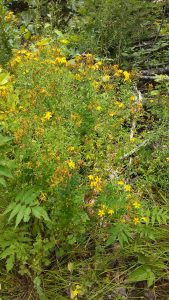
We have massive amounts of wild medicinal herbs growing in on the edge of the clearings all over the property. We have been able to harvest enough in one year to give enough herbs for a year or more.
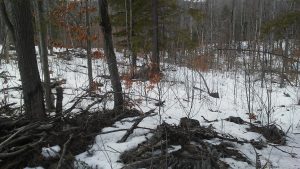
We also noticed the large amount of kindling and larger firewood that became available to us after the snow falls. The piled up snow on the ground gives a couple extra feet of reach to get the wood that isn’t laying on the ground rotting. We also found a large number of ash trees that burn well when they are still wet. Thes trees need to be cut because the tops are starting to rot. We already had one tree with a dead top that fell and got stuck awkwardly in other trees. Wood is easier to haul in a sled across snow rather than in a wagon across rough terrain.
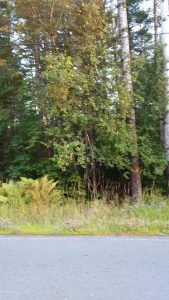
We found lots of wild apple trees growing along the sid of the road that we can take cuttings from and grow a free orchard. There are also many wild grapes, hazelnuts, cherries, choke cherries, blueberries brambles and so many other things we aren’t yet familiar with. Harvesting cuttings from local wild trees or bushes also provides hardier cuttings for your area. They clearly grow well in this area if you found a full grown tree.
There are so many other examples of things we found through observation. Sometimes a little interaction will also help you discover more hidden treasures where you are. Interacting with what you already have around you takes more careful planning, but the ease of execution of your project and the increased longevity will be worth your time.
Speaking of observation, here is my view out my back window:
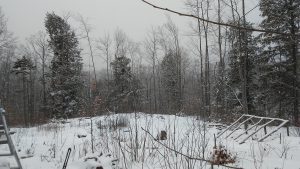
Back to permaculture principles.
